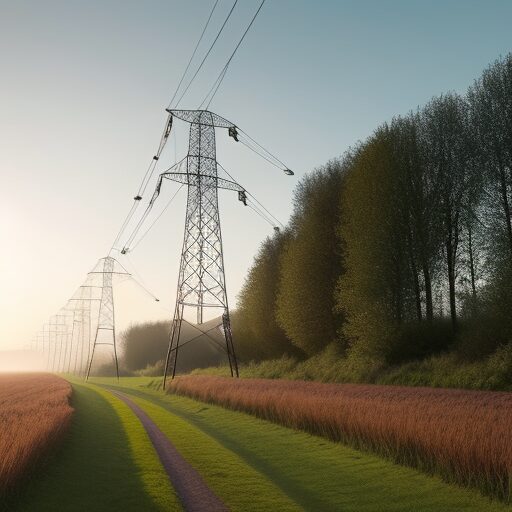In an era where the principles of transparency and fairness have become the bedrock of consumer interactions, a covert practice continues to thrive – the standing fee that clandestinely adds an average of £300 to British households’ gas and electricity bills. As households navigate the choppy waters of rising costs, the time has come to shed light on this concealed charge and recognise it for what it truly represents – an unjust financial burden demanding immediate reform.
The standing fee, expertly camouflaged within the intricate lingo of energy bills, bears a striking resemblance to a hidden tax that deceives homeowners. Energy companies staunchly argue that this fee is essential for infrastructure maintenance and ensuring service stability. Yet, a deeper inquiry uncovers its real essence as an inequitable maneuver that disproportionately impacts the most susceptible segments of society.
Proponents of the standing fee contend that it’s an inevitable necessity, a means to secure uninterrupted energy access and fund crucial infrastructure upkeep. However, the facts paint a different picture. An eye-opening 2022 study by the Citizens Advice Bureau revealed that nearly a third of the UK population grapples with financial constraints so severe that they’re forced to make sacrifices on basic necessities to pay energy bills. For these households, the standing fee becomes an extra blow that thrusts them further into economic uncertainty.
The assertion that this fee is indispensable for infrastructure maintenance crumbles upon closer inspection. Energy corporations routinely declare robust profits, accompanied by substantial executive bonuses. One cannot help but question why, if these corporations are thriving, consumers – particularly those navigating financial instability – must shoulder the responsibility of maintaining infrastructure. After all, isn’t infrastructure upkeep an inherent component of the service that we’re already paying for?
The consequences of this unjust fee extend beyond mere financial duress, triggering a vicious cycle of inequality that disproportionately affects low-income families, single-parent households and the elderly. These vulnerable groups, often dependent on fixed incomes, find themselves at a crossroads where they must choose between keeping warm and putting food on the table. As the specter of fuel poverty looms larger, the standing fee becomes an insurmountable barrier to achieving energy equity.
The remedy appears unequivocal: the standing fee must be promptly reined in. The responsibility of funding infrastructure should be more equitably shared between energy conglomerates and consumers. Achieving this demands an extensive overhaul of regulatory frameworks, redefining the roles and obligations of energy providers. Additionally, transparency in billing practices must be elevated to a paramount level, ensuring consumers are fully informed about the financial implications they face.
The time has arrived for UK regulatory authorities to confront this hidden inequity head-on. By allowing the standing fee to persist, they inadvertently endorse a system that adds undue pressure to the very individuals they’re entrusted to safeguard. The pursuit of a just and impartial energy market remains a distant ideal as long as this stealthy charge remains woven into energy bills.
The standing fee in the UK, adding up to £300 to gas and electricity bills, is undeniably prejudiced and requires intervention. This concealed levy serves to deepen economic disparities, with vulnerable populations shouldering the consequences of profit-oriented energy policies. Eliminating this covert charge marks a significant stride towards an energy landscape that is more equitable and transparent – one that truly serves the interests of all homeowners, irrespective of their socioeconomic standing.



Rarely have I read such a prejudiced piece under the guise of ‘sustainable’. The standing charge is not secret or sneaky or hidden, it’s there on the bill like everything else. Whether it should be there or not is simply a political choice. There are winners and losers in both scenarios.
If you want social justice or some other laudable aim, then you need to look further at all-inclusive tariffs that include a basic ration of electricity, and at some compensation mechanism for e.g. disabled people who need to use a lot of electricity.
I appreciate your comment and I agree that there are winners and losers in both scenarios, but a standing charge can be a barrier to social justice, as it can disproportionately impact low-income households who use less electricity.
What I’ve found interesting is speaking to people that don’t pay attention to their bills, and they had no idea that there was even a thing like a “standing charge”.
The electricity grid is a complex and expensive system to maintain, and a standing charge helps to ensure that everyone contributes to the cost of the grid, regardless of how much electricity they use. This helps to keep electricity prices affordable for everyone. I think that a standing charge can be a part of a sustainable solution, but it is important to also consider the needs of low-income households and disabled people.
Thanks again for your comment.
“The electricity grid is a complex and expensive system to maintain, and a standing charge helps to ensure that everyone contributes to the cost of the grid” Your saying and the article implies that the standing charge contributes to network costs. But ofgem states that your kw unit charge also includes network costs. So we are being charged twice by contributing via the unit charge and the standing charge. Something is seriously wrong here.
Thank you for your comments John. If there’s a double charge that’s even more appalling.
What I find equally galling is that before the energy crisis, as part of your tariff shipping, we would select providers based on unit rate as well as stand charge fee. That to me suggests that there’s less to do with grid infrastructure maintenance because why would one provider, for example, charge is a standing fee of 20p/day while other would charge 35/day. Doesn’t make sense. And why would the standing charge shoot up to 50p/day now with the energy crisis, when there hasn’t been a significant in those maintenance costs. Just easy money to bolster already high profits.